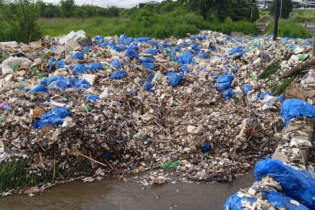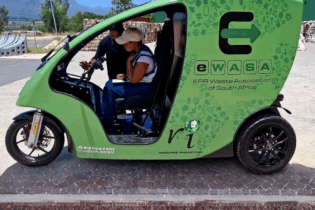South African companies involved in using or producing recycled rubber products can look forward to becoming more environmentally compliant, while at the same time saving on production costs.
According to Sachin Kulkarni, sales manager of Bulk Gases, at industrial and specialty gas products and chemicals company, Air Products, the evolution of oxygen enrichment for cement kilns and cryogenics for rubber recycling companies, is extremely beneficial to industry. “These rubber recycling methodologies are finding increasing favour with companies who seek ways of reducing their carbon footprint. At the same time, they benefit from decreased operational costs and a higher profit margin,” Kulkarni explains. Burning rubberKulkarni says that oxygen enrichment evolved when cement producers sought alternative fuels to the expendable and non-renewable natural resources, such as coke and coal, for use in the cement kilns. “They researched many options, such as waste fuel and solvents. However, the noxious fumes derived when heating these substances using traditional methods in the kilns was considered detrimental to the environment and humans,” Kulkarni points out. Ultimately, the dilemma is one of energy versus emissions.
“One of the alternative fuels the researchers considered was waste rubber. In the late 1980s, oxygen enrichment was adopted as the ideal methodology for achieving full combustion when re-using rubber as a fuel in cement kilns. Due to the fact that oxygen enrichment allows high temperatures to be reached very quickly, the impact of emissions is drastically reduced, while at the same time producing the requisite amount of heat required for the cement manufacturing process,” Kulkarni explains. The heat produced is so intense that it effectively removes all nitrogen from the process. While oxygen enrichment is now commonly used in cement kilns which utilise recycled rubber as a fuel, Air Products’ burner system has evolved to a stage where its optimised design allows for complete process stabilisation and maximised output. “Air Products’ expertise and experience with burner technology has been carefully developed and honed in multiple applications worldwide and our systems are considered to be huge contributors to the ongoing stewardship of the environment,” Kulkarni adds. The return on investment of an oxygen enrichment system is excellent. Companies adopting this methodology would require an oxygen burner, an oxygen flow meter and NOx monitoring equipment, which monitors flue gases, to adequately decrease or increase oxygen flow.
“There are three different types of oxygen enrichment – low, medium and high – which vary the rate between 1 and 4 %,” says Kulkarni. Documented benefits include an increase in clinker production of between 5 and 30%; an increase in usage of alternative fuels (such as rubber) of 30 to 80% and improvements in kiln stability.
The ‘big freeze’In addition to its expertise in the field of oxygen enrichment for cement kilns, Air Products has established a footprint as a supplier of superior products for the cryogenic recycling of rubber.
Kulkarni explains that in the late 1970s there was a global move to partially replace pure rubber with approximately 1.5% latex rubber in products. This initiative was one of the early motivators to consider the effects that industry has on the environment, and to find alternatives to the use of non-renewable resources. In a complementary manner, as the demand for more finely ground recycled rubber increased, the incentive to find more productive and economical ways of achieving this gained momentum. “The primary problem with grinding rubber into very fine particles is that it is very malleable. In order to reduce its malleability and give it the characteristics of a harder substance such as glass, it was necessary to temporarily change its inherent form,” says Kulkarni. By applying cryogenic principles to the handling of the rubber, industry has been able to alter the form of the rubber so it becomes extremely brittle and, therefore, easy to break and grind. The first step in the process is the removal of all foreign objects, such as wire and nylon from rubber tyres and other waste rubber. Thereafter, the rubber is chopped up into manageable chunks and is placed on a sealed system conveyor. Liquid nitrogen is sprayed on the rubber until it reaches glass transition temperature levels. Following this process, the rubber can be removed for fine grinding. The resultant powder is used as an additive for tyre manufacturers, rubber parts suppliers, on airport runways and in the sound-absorbent rubber mats at airports. “Research indicates that increases in throughput levels of up to 100% have been noted when maintaining the same particle size distribution achieved with ambient temperature methodologies. Similarly, finer grinding can be achieved if one uses the same throughput levels,” says Kulkarni. The benefits derived from using cryogenic technology in this application include reduced power consumption, increased usage of waste product, less impact on the environment and increased return on investment. Kulkarni warns, however, that cryogenic rubber recycling is not a ‘one size fits all’ philosophy. “After an initial meeting with clients, Air Products undertakes laboratory tests on the client’s rubber samples to determine the best final particle size. We are able to design and supply a complete cryogenic system for a client or simply provide them with guidance on possible best practice scenarios.”








